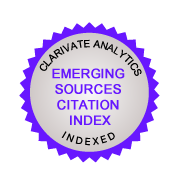A Re-Examination of the Role of Foreign Direct Investment and Exports in Malaysia’s Economic Growth: A Time Series Analysis, 1970-2006
Keywords:
Causality, Cointegration, Export-led growth, FDI-led growthAbstract
The main objective of this study was to re-examine the role of foreign direct investment (FDI) and exports in Malaysia’s economic growth over the period of 1970 to 2006. The Johansen and Juselius (1990) cointegration test was used to investigate the presence of a long-run equilibrium relationship between economic growth and its determinants. Besides, the vector errorcorrection model (VECM) and the Granger (1969) causality test were used to examine the short-and long-run causality direction between the relevant variables. The empirical results revealed that economic growth and its determinants were cointegrated. The Dynamic OLS results suggested that FDI and exports were positively related to economic growth. In addition, the Granger causality results strongly supported bilateral causality between economic growth and its determinants. This indicated that FDI and exports contribute to Malaysia’s economic growth. In fact, high economic growth will also cause FDI and export-orientated industries to grow rapidly.
Additional Files
Published
24-09-2008
How to Cite
Foon, T. C. (2008). A Re-Examination of the Role of Foreign Direct Investment and Exports in Malaysia’s Economic Growth: A Time Series Analysis, 1970-2006. International Journal of Management Studies, 15, 47–67. Retrieved from https://e-journal.uum.edu.my/index.php/ijms/article/view/9854
Issue
Section
Articles












